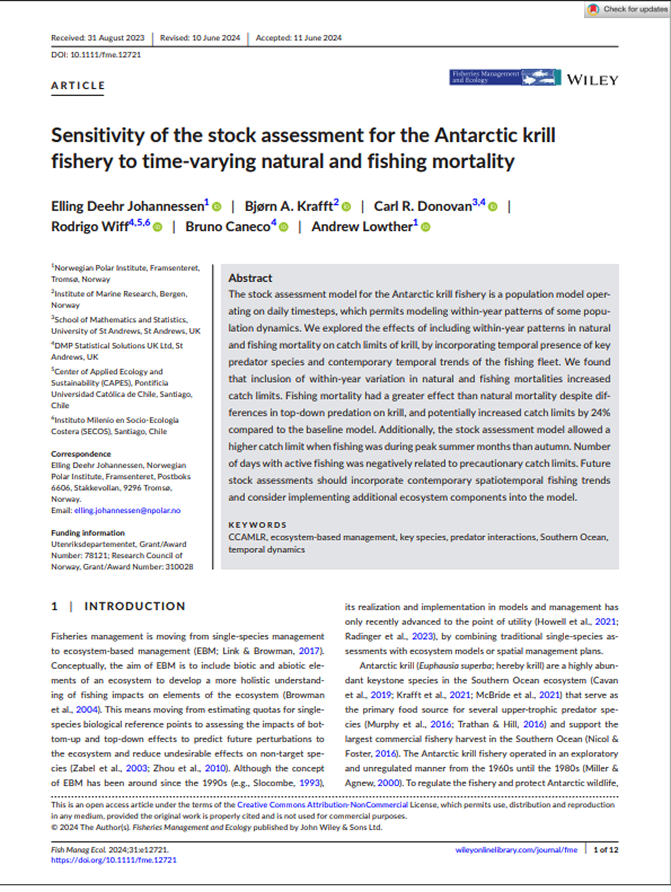Biomass
Fisheries management
Antarctic ecosystem
Krill (Euphausia superba)
Description and use of parameters within Antarctic krill (Euphausia superba) assessment models conducted with the Grym
Summary
This technical guide explains how to assess Antarctic krill populations using the Grym R package, a modernized version of CCAMLR's Generalised Yield Model (GYM). The authors address a critical gap in the field by documenting the specific methods needed to calculate model parameters - information that was lacking from the original 2007 krill assessment.The Grym model requires three main types of data inputs: biological parameters that describe how krill grow, mature, and reproduce; fishery parameters that capture fishing patterns and gear selectivity; and technical model settings. A significant challenge is that many crucial parameters lack current estimates, especially the growth coefficients that describe how krill grow over time and the measures of recruitment variation.The guide establishes methodological approaches for calculating these parameters from survey data, with special attention to proportional recruitment methods and mixture analysis techniques for identifying different age groups in krill populations. The paper offers two main approaches: mixture analysis, which uses statistical models to identify age cohorts, and a simpler threshold method that classifies krill as recruits or adults based on size.This work is crucial for modernizing CCAMLR's krill management strategy, which currently operates under precautionary catch limits established in 2007, and enables the shift toward more responsive management systems based on up-to-date stock assessments.The research provides the technical foundation needed to move from static management approaches to adaptive frameworks that can respond to changing krill population dynamics and environmental conditions in the Southern Ocean.

1
CCAMLR subareas within the Statistical Area 48 (green). Division 58.5.2 is highlighted in blue.Key Findings
1
The Grym model requires over 25 different inputs covering krill biology, fishing practices, and technical settings to run assessments.2
The model tracks krill from ages 1-7 years, based on their natural lifespan and available fishery data 3
Critical growth measurements are outdated or missing, particularly the parameters that describe how fast krill grow and their maximum size, which are essential for accurate population modeling4
The model can estimate both death rates and population changes by analyzing what proportion of the krill population consists of young recruits in survey data5
Management targets maintain 75% of the breeding population biomass, following current CCAMLR conservation guidelines. The model forecasts krill populations 20 years into the future using daily calculations to provide management recommendations 6
Two main approaches identify different age groups: mixture analysis uses statistical models to separate age classes, while a simpler method classifies krill as young or adult based on a 36mm length threshold7
The model accounts for measurement uncertainty from research surveys and incorporates environmental factors like ocean productivity to estimate when krill grow during the year.

